Do You Train in Martial Arts?
Actively training in combat sports is a proven method for building confidence and real skills for fighting.
Whether actively involved in,
Brazilian Jiu-Jitsu,
Boxing,
Muay Thai,
Wrestling,
Judo,
Or ANY other combat sport,
You are a cut above the average person walking around in the world.
But how and when should you use those skills?
How forward should you be?
At what point is it time to put the skill set that you have
honed in training, into use against another person out in the normal world?
What if I haven’t done any martial arts training?
In MDOC Paul has combined these skills and past training, with real-life experiences and can help you build a solid foundation.
MDOC 2 will show you the progression and give you the information you need to find solid FUNCTIONAL martial arts training in your area.
You will know why and where fights can end up, allowing you to tell good training from a self-proclaimed “street defense expert” hack.
These are the questions that need to be answered, and that Coach Paul Sharp can help make clearer for you in MDOC. MDOC 2 takes these lessons to the next level.
Some of you already do some form of combative training as a part of your lifestyle, whether it’s training at an academy for Judo, Jiu Jitsu, or Boxing. MDOC is meant to help tie your training in with the other aspects of self-defense.
Most training of the martial arts training I have had over the years has focused on how to defend yourself against a lone physical attacker. But as Paul Sharp is quick to point out, this is just a subset of the situations we should be preparing for. If you think of dangerous situations on a continuum, there are early considerations like situational awareness, red flags in someone’s body language, effective verbal assertiveness, and distance management.
If you are good at these things, most physical conflicts can be avoided.
On the other end of the continuum are things like multiple attackers and weapons attacks. Ideally, someone could just run away from these situations, but what if you are with your children or on a moving train?
Paul Sharp covers the whole spectrum of self-defense situations better than anyone I have met.
He provides practical, detailed instruction on how to handle everything from a stranger who invades your space in a parking lot to surviving a knife attack – and he does so with humor, patience, and a wealth of real-world experience. As someone who spent years infiltrating the Russian mafia as an undercover officer,
Paul has more experience navigating high-risk situations and dangerous people than just about anyone I know.
Every time I have attended one of his trainings, I have left feeling significantly more knowledgeable and confident.
MDOC 2 Lesson 1 –
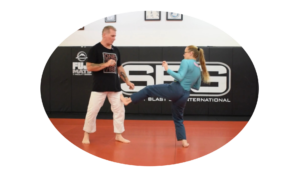
What is going to go through your mind when something starts to go
wrong? We’ve all been in a situation where something felt “off.” Hundreds of thoughts can run
through your mind all at one time when you think something is about to go wrong. Paul helps us
tone this down and focus on where our mindset should be in a potential situation. Your mindset
and awareness may be all you need, allowing you to never get into a situation in the first place.
MDOC 2 Lesson 2 –
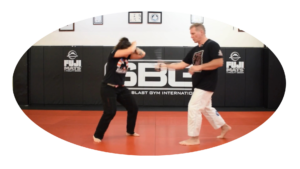
Verbal sparring, controlling tempo, and decision-making for when to
engage. Knowing how to talk to people in a way that de-escalates the situation may be the most
valuable lessons in this course. Every fight you avoid is a fight you win. If disengaging is not an
option, how do you engage?
MDOC 2 Lesson 3 –
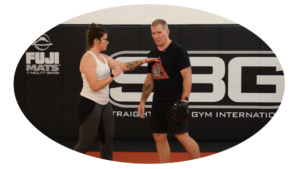
The more time you have to respond the better. The best way to get that
time is Distance. Getting that distance and keeping that distance (distance management), will be
key in having enough time to make good decisions. Paul breaks down how to manage that
distance from an assailant or group of assailants.
MDOC 2 Lesson 4 –
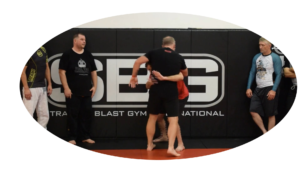
Now that you understand how keeping distance can keep you safe, it’s
time to learn how closing the distance can keep you safe. Much like a boxer closing in to hug
over the top of someone, you may want to get into the “clinch.” Closing into a clinch can give
you more control over the space and thus control over the assailants ability to strike you.
MDOC 2 Lesson 5 –
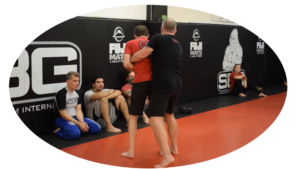
You’ve gotten in! Now what? What does staying safe their mean? What
are your goals? This can change under different scenarios but the fundamentals stay the same.
Paul breaks down some of those fundamentals here and goes over some of your options. Options
to break away from the fight to run, or move to finish the fight when running isn’t an option.
MDOC 2 Lesson 6 –
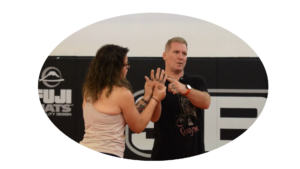
Coming back to distance management, Paul reviews the “teep,’ or foot jab,
is one of those tools, great for managing space.
MDOC 2 Lesson 7 –
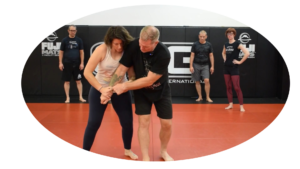
Taking it to the ground. There are many things that can go wrong once you
are on the ground, including other opponents, concrete, cars, etc. If you already train in Jiu Jitsu,
controlling these positions isn’t the issue, learning when and how to leave is. Learn simple drills
to practice being aware of your surroundings, or multiple opponents. Where and how to control
someone, and where and how to leave when other attackers come into play.
MDOC 2 Lesson 8 –
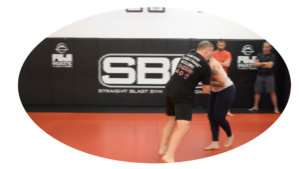
Any weapon, any tool, hell even a chair can be a deadly weapon in the
wrong hands. Dealing with improvised weapons is just as gun defense, after all nearly every year
improvised weapons kill more people in the United States than ALL rifles combined! Learning
how to implement the skills you have already learned in the course to deal with improvised
weapons is a MUST!
“Paul Sharp probably taught me one of the two most important classes (I can’t decide which one
was more important) in over 20 years of training mixed martial arts.
What Paul showed during that session transformed my view of my surroundings and my risk
assessments of both my own and my family’s safety.
When I receive phone calls from women looking for advice on how to deal with a former partner
who was abusive, but are still trying to remain in contact and they fear for their lives, the Police
won’t help and they don’t know what to do, I give them the advice Paul gave in that session.
I’ve also realized that even in high security areas such as planes, innocuous regular items we all
carry and will pass security because airport security don’t assess risks in the way Paul does, can
be turned into tools that bend the probabilities dramatically in your favor should a violent
conflict erupt.
Paul is calm, softly spoken, and exceptionally well prepared. This presence and expertise will be
passed directly to you through exposure to this material.”
-Glyn Powditch
Knives, baseball bats, chairs, to velvet rope post at the movie theater.
Anything could be used as weapon if held with the right intent!
Do you know how to deal with them? Have you ever had someone swing a stick or a fence post at you?
NO!
Very few people have. Learning how to deal with these is paramount to self defense. You never know what random thing an aggressor may pick up, and you
HAVE TO BE READY!
Once you have the tools introduced in MDOC 2, it’s time to drill. See it first hand, as Paul Sharp coaches a group of students at SBG HQ. Paul also explains why the material is taught this way, and how the training has evolved into MODC 2.
MDOC 2 Weapons Lesson 1 –
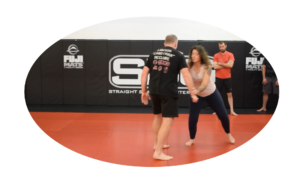
Paul introduces himself to the academy. He explains what qualifies him to coach this material and talks about situations he has dealt with and lived through. More importantly Paul covers why it’s so important to trust your training. He also lays out what the MDOC2 seminar will cover and how to follow along. Then Paul starts by jumping right into proper posture, verbal judo, and engagement.
MDOC 2 Weapons Lesson 2 –

Paul reviews sticking with what you normally do verbally. By using language that you are comfortable with it can help keep you confident in tense situations. Paul discusses the difference between language that can de-escalate or provoke a dangerous scenario.
MDOC 2 Weapons Lesson 3 –
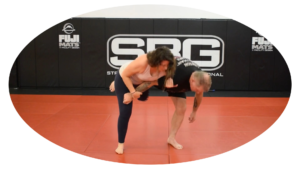
The situation has moved past the point of conversation and it’s time to learn how to engage and prioritize. Upright, conscience, and mobile – three things you need to remain in the fight, and be able to escape. Paul reviews these concepts and begins to drill situations that could occur.
MDOC 2 Weapons Lesson 4 –
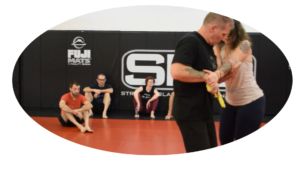
Once engaged you need to deal with the clinch to help avoid strikes. In this lesson Paul reviews some of our options, taking the back, avoiding getting our back taken. Paul also covers disengage if second opponent appears.
MDOC 2 Weapons Lesson 5 –
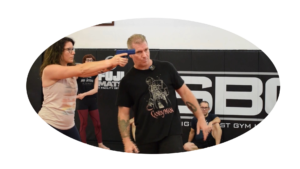
In this lesson Paul lays out the introduction to weapons. Paul reviews the odds that this situation could occur in the first place, the core concepts behind the training, and the most important details you need to know before working against armed individuals.
MDOC 2 Weapons Lesson 6 –

Edge weapons can be one of the scariest tools to work against. Paul reviews how this could occur and explains the mentality of someone that would use a knife to attack. Knowing the signs could be enough to avoid a situation in the first place. This lesson goes into where the failure point is when defending against edged weapons and how can you avoid it.
MDOC 2 Weapons Lesson 7 –
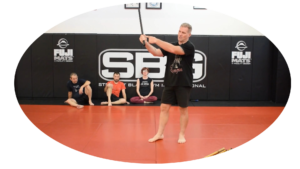
In this lesson Paul switches gears and begins to introduce impact weapons, which are the most prevalent type of weapon, since any object can be picked up and swung with intent to harm.
MDOC 2 Weapons Lesson 8 –
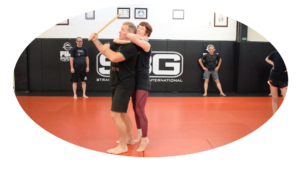
Now Paul goes into controlling the weapon. Dealing with impact weapons, edged weapons, or firearms, all have similarities, but they each present special considerations. Learn the difference between dealing with impact or edge weapons. How to move, correct distance to maintain, assessing your strategy specific to your set of skills. This final lesson is a must for anyone who has EVER trained in martial arts for the purpose of self defense.

